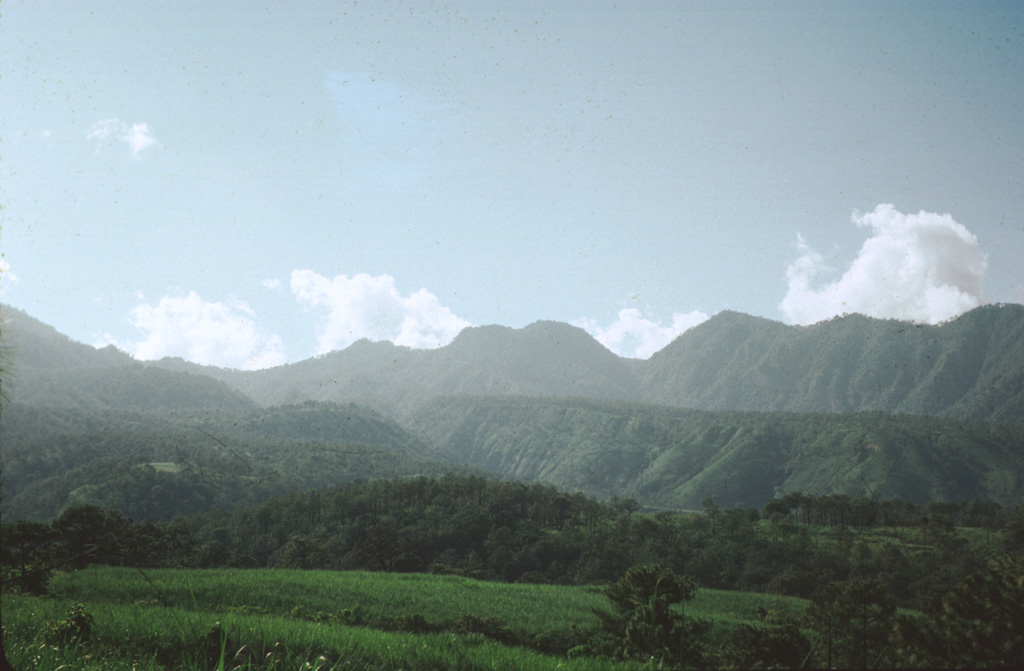Image GVP-07984

Volcán San Juan, the NW-most major volcano of the Mexican Volcanic Belt, displays an irregular profile west of the city of Tepic. The northern wall of a 1 x 4 km wide, oval-shaped caldera that was created about 15,000 years ago forms the right-hand horizon. The rounded notched peak on the center horizon is an intracaldera lava dome that was constructed shortly thereafter. The flanks of Cerro Alto stratovolcano, the 2240 m high point of the San Juan volcanic complex, can be seen at the extreme left.
Photo by Jim Luhr, 1976 (Smithsonian Institution).
![]() This image is made available under the Public Domain Dedication CC0 license, but proper attribution is appreciated.
This image is made available under the Public Domain Dedication CC0 license, but proper attribution is appreciated.

San Juan
